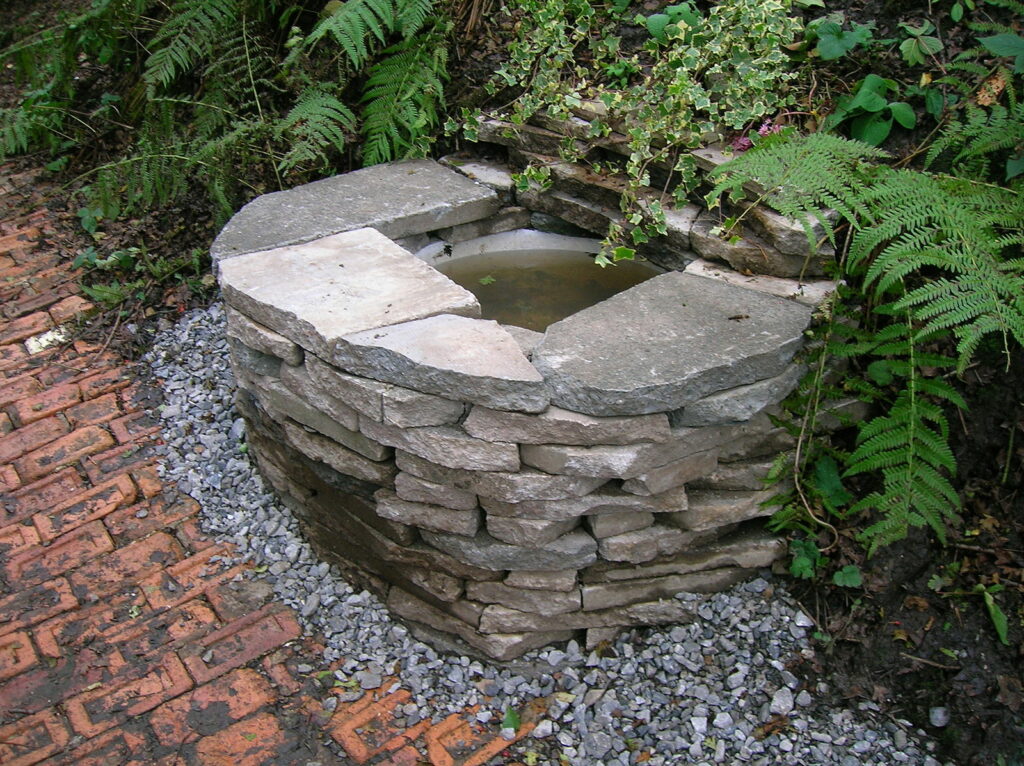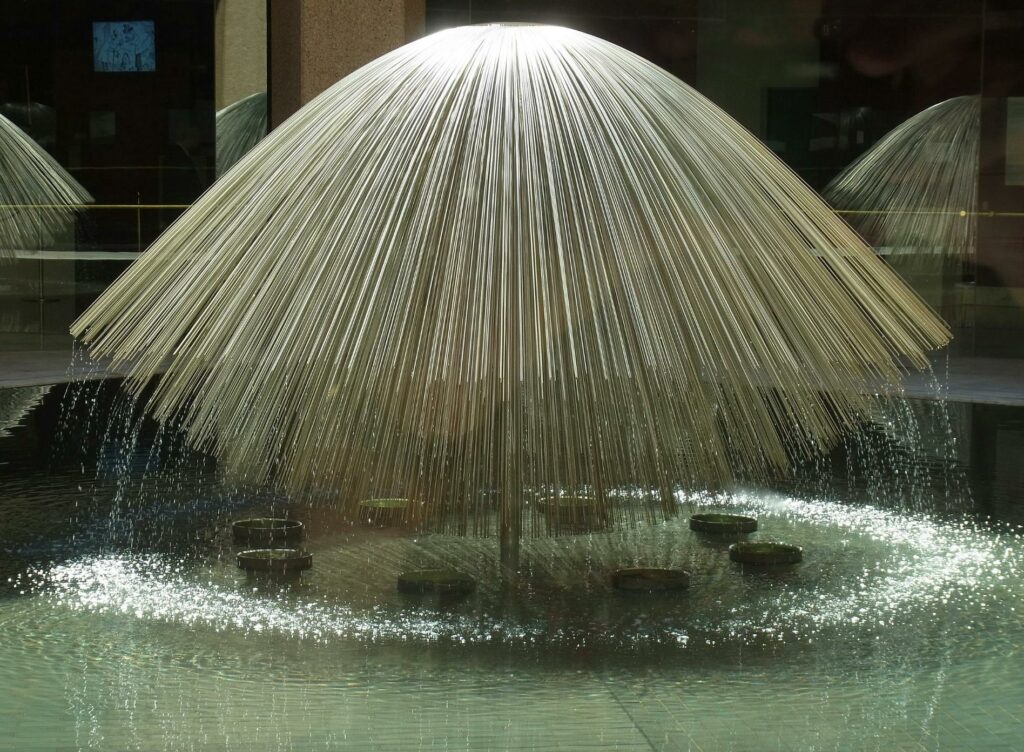Today we’re exploring fountain change economics. People have been tossing coins into wishing wells for generations. But have you wondered what happens to all this spare change?
How much money do cities/malls make from fountains? How is it collected? And where does it all go?
In this fun issue, we’re (shallow) diving into some of the world’s most famous water fountains.
Let’s go 👇
Table of Contents
Why do we throw coins into fountains?
Tossing coins into fountains seems like something that started in the modern era.
But apparently it’s an old tradition that can be traced back thousands of years.
It started with wishing wells. Nobody knows exactly how the practice got started, but there are a few theories:
The ‘Well of Wisdom’
Nordic traditions were home to the Well of Wisdom – a well that grants infinite wisdom if you sacrifice something important.
In Norse mythology, Odin (the one-eyed “All-Father”) sacrificed his eye for the privilege of wisdom. (Most of us just throw away pennies, he sacrificed an eye. To each his own)

Purifying water
Speaking of wisdom, some believe that ancient people accidentally discovered that throwing coins into a well helped purify the water.
It turns out the copper and silver in coins killed bacteria in the well’s water supply, making it saf(er) to drink.

An offering for the Gods
German and Celtic cultures believed water inside the well was sacred and home to gods.
Water the source of life, and was a scarce commodity. So naturally, everything from coins and precious beads, to the heads of conquered enemies (!) were thrown into wells as an offering to the deities.
This dates back to the year 400 AD, and possibly much earlier. Just last year archeologists uncovered a 3,000-year-old well in Germany.
How much do water fountains make?
At some point, wishing wells developed into public fountains; and some became money-making cultural landmarks.
According to a 2007 Fountain Money Mountain report, tourists globally throw $3.7m into fountains each year. The report claims that, for those who throw coins in, the average deposit is about 40 cents.
Trevi Fountain, Rome 🇮🇹
Rome’s Trevi Fountain is by far the most lucrative water fountain in the world. Nothing else comes close.
The 18th-century sculpture rakes in USD $1.5m/year ($3,259 each day).
10.5m people visit the fountain annually, so each visitor tosses in an average of 14 cents.

The Trevi fountain is so lucrative because almost everyone that visits the fountain throws money in.
It’s part of the tradition (helped by the 1954 film Three Coins in the Fountain.) You stand with your back facing the marvel, and toss a coin over your left shoulder with your right hand.
Doing so supposedly guarantees your return to Rome at some point in the future. (So you can come back and throw even more coins in… What a nice racket!)
Disneyland 🇺🇸
Okay, Disneyland doesn’t have just one fountain — there are ten scattered between California’s Disneyland and Florida’s Disney World.
All in, the Mickey Mouse water features pull in over $20,000 per year.

Bellagio Water Fountains 🇺🇸
Moving to the middle of the desert, Las Vegas’ Bellagio Lake is pretty big player in the fountain change mafia. The darling of the Strip gets about $12,000 tossed in each year.
The amount a wishing well makes is heavily dictated by season. Off-peak seasons mean even massive fountains, like Chicago’s Buckingham Fountain, get less than a dollar a day.
Meanwhile, locations that are always popular (like Disneyland and Rome) can earn thousands per week.

Other notable fountains
- The United States’ biggest shopping mall, the Mall of America, collects about $24,000 annually from its fountains. With 40 million individual trips to the mall per year, they get about 6 cents per 100 visits.
- Inside the Mall of America lies the original Rainforest Cafe restaurant. Inside that lies another fountain, which rakes in an additional $25,000 per year. These are reported separately, and no, the restaurant does not have to report this as income.
- The 9/11 Memorial Fountain still retrieves ~$2,700 per year (even though the city has implored tourists to stop throwing coins in, because they block the drains.)
Does fountain change get reported as income?
No. Coins thrown into fountains are not typically considered taxable income by the entity that retrieves them.
In many cases, these coins are collected by the owners or managers of the fountain, who may use them for maintenance or donate them to charity.
Tax implications vary based on the entity’s status (non-profit, government, private business) and how they use the money. For private entities, the money collected could theoretically be considered as additional revenue.
However, if the money is donated to charity anyways, it potentially qualifies for deductions based on charitable contributions.
Where does all the money go?
In most cases, the answer is simple: It goes to charity.
Disney World has pledged to use fountain proceeds for Community-Based Care: a local charity in central Florida.

The Bellagio donates its annual $12k+ haul to various nonprofits. In 2011 the company handed all its money to Habitat for Humanity.
The Mall of America donates its money to “various charitable organizations” (nonprofits around the area can apply for the cash), while the Rainforest Cafe splashes its fountain revenue on environmental charities (very on-brand).
Down Under, Australia’s Parliament House is surrounded by some impressive water fountains that tourists use to make their wishes come true.
The public complained that they didn’t want the government to get its hands on their loose change, so the Financial Committee set up a trust account to deal with the proceeds, directing funds straight to UNICEF.

The Pope vs Rome City Council
For a company like Disney, $20k is chump change. A rounding error in their annual report.
But since the Trevi Fountain makes so much money, there has been some drama over who should get the funds.
Since 2001, the seven-figure sum was routinely collected by the Catholic Church. Il Papa and his crew used the $1.5m+ to support a local Catholic charity called Caritas. This group helps the city’s homeless and provide useful social infrastructure like low-cost supermarkets and residential buildings.
But in 2019, everything changed.
A big dispute erupted between the Catholic Church and the Rome City Council. Suddenly, the latter claimed ownership of the fountain — meaning all the money was theirs.

The City Council wanted to find a secular use for the funds; dedicating them to social improvements and updating national heritage sites.
The city was divided. Rome’s religious leaders were bitterly disappointed that the tradition of donating to Caritas was end. A daily newspaper pronounced the Rome City Council as the “enemy of the poor.”
On the flip side, less religious citizens were resolute in their stance. After all, why should the money belong to the church?
In the end the public pushback was too much for the Council. The government’s plan was criticized into oblivion, and the re-ownership plan went up in smoke.
Last year, the Roman Catholic Church renewed its agreement with the Caritas charity for three more years. City Council can’t attempt another money grab until 2027.
Can you go fountain diving?
With popular fountains, the coins are typically collected by the owners and sent off to charities.
But what about “regular” fountains where there isn’t a tradition of coin tossing (and where there isn’t an obvious owner?)
As a general rule, it’s illegal to pillage the loose change tossed into fountains. But it’s not always enforced. And cities increasingly look the other way.
Most fountains must be cleared semi-regularly to prevent the plumbing from getting clogged. Maintenance workers actually have first dibs on whatever is found.
According to a report from The Atlantic, Madison Square Park’s fountains have somewhat of an honor policy:
“Money collected…generally goes to charity when there is enough of it; when fewer coins remain…the workers are free to keep it.”
But it’s not uncommon for the fixer-uppers to be left with very little change at the end of the day. The fact is that water features around the world are a source of income for many homeless people.
The Kansas City Parks & Rec Department claims they don’t take any money from their fountains. They let the homeless get to it first.

But the most interesting case of all is that of Roberto Cercelletta — perhaps the biggest beneficiary of fountain change in the world.
Remember, until the year 2000, change tossed into the Trevi was fair game. Ownership hadn’t been established, so plundering the thousands of watery coins was technically legal.
Roberto Cercelletta made the most of it. Each morning the Rome resident woke up early, grabbed a magnet and rake, slipped through the shadows, and went coin-fishing at the Trevi, literally “raking in” up to $1,000 each visit.
It turns out he had been playing this little game for nearly 40 years, until the government declared fountain money was owned by the Catholic Church. Suddenly, Cercelletta wasn’t an entrepreneur — he was a thief.
After being ousted by a local newspaper, Cercelletta was arrested in 2006, thus ending the world’s greatest spare change heist.

That’s all for today.
Reply with comments. We read everything.
See you next time,
Ben Knight
Disclosures
- This issue was sponsored by
- The ALTS 1 Fund has no holdings in any companies mentioned in this issue
- This issue contains no affiliate links













